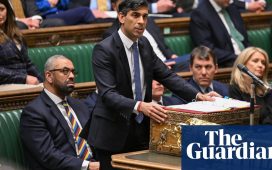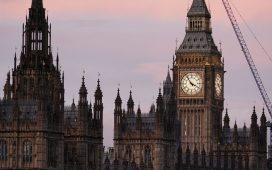A two-day window has opened in which members of the public can sign up as “registered supporters” of the Labour Party, securing themselves a vote in the upcoming leadership election.
The 48-hour registration period closes at 5pm on Thursday 16 January and is the last chance to ensure that you can vote for Jeremy Corbyn’s successor.
How is the leader elected?
MPs initially need the backing of at least 10% of the party’s MPs and MEPs.
Keir Starmer, Rebecca Long-Bailey, Lisa Nandy, Jess Phillips and Emily Thornberry secured the support of at least 10% (22 nominations) by the Monday deadline. Starmer led the race with 86 nominations. Long-Bailey came second on 33, while Nandy won 30 backers and Philips had the support of 23 colleagues.
According to the BBC, Thornberry – who also won 23 backers – only passed the threshold of 22 “less than 10 minutes” before nominations closed.
Candidates now need to win the backing of either 33 local parties or three affiliates, including two trade unions, to get on the final member ballot.
Union, Labour’s largest financial backer, has thrown its support behind Starmer, while The Independent reports that Unite is expected to back Long-Bailey despite Unite boss Len McCluskey insisting that no decision has been made. Meanwhile, Nandy has had her campaign bolstered by the backing of the National Union of Mineworkers (NUM).
How does the membership vote work?
All Labour Party members, plus affiliated and registered supporters, get a say in the leadership election, through a one-member, one-vote system. That means that a new party member has the same say in the process as an experienced member of the shadow cabinet.
During the next 48 hours, you can sign up to become a registered supporter of the party, meaning that you will have a vote in the election alongside the party’s half a million members.
Applicants to become registered supporters must be on the electoral register, meet Labour’s membership requirements and pay £25 to vote.
Members vote for a candidate using the alternative vote system, under which candidates are first ranked in order of preference. If any candidate wins more than 50% of that initial vote, they are the winner.
If no candidate wins 50%, the candidate with the fewest first preference votes is eliminated and their votes are reallocated to their backers’ second preference candidates. This process is repeated until one candidate has more than 50% of the vote. They are then declared the winner.
When does it start?
After the window to sign up as a registered member closes at 5pm on 16 January, a postal ballot of members will run from 21 February to 2 April, iNews reports.
The ballot will close at midday on 2 April, before a special party conference is convened on 4 April to announce the winner of the leadership and deputy leadership elections.
Who is running for leader?
- Sir Keir Starmer, shadow Brexit secretary (odds: 4/9)
- Rebecca Long-Bailey, shadow business secretary (5/1)
- Lisa Nandy (7/1)
- Jess Phillips (30/1)
- Emily Thornberry, shadow foreign secretary (50/1)
Who is running for deputy leader?
The leader and deputy leader elections happen at the same time, but are separate contests.
- Richard Burgon, shadow justice secretary
- Ian Murray, shadow Scottish secretary
- Angela Rayner, shadow education secretary
- Dawn Butler, shadow women and qualities secretary
- Rosena Allin-Khan, shadow sports minister














